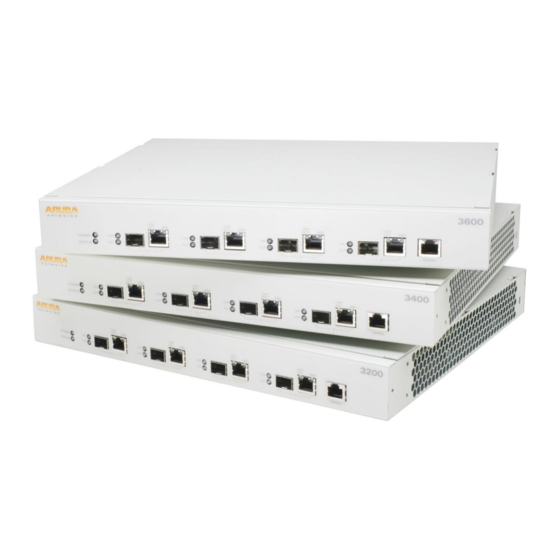Table of Contents
Advertisement
Dell W-3000 and W-6000/M3 Mobility Controllers with Dell AOS
FIPS Firmware
Non-Proprietary Security Policy FIPS 140-2 Level 2
January 26, 2015
This is to advise that the document entitled "Aruba 3000 and 6000/M3 Mobility Controllers with
ArubaOS FIPS Firmware Non-Proprietary Security Policy FIPS 140-2 Level 2" Version 3.2, dated August
2014, applies to Dell W-3000 and W-6000/M3 Mobility Controllers with Dell AOS FIPS Firmware. Aruba
Networks is the Original Equipment Manufacturer (OEM) for the Dell Networking W-Series of products.
This document, provided below, is applicable for use by Dell W-Series customers for security policy
information and instruction on how to place and maintain the W-3000 and W-6000/M3 Mobility
Controllers in a secure FIPS 140-2 mode.
Dell Networking W-Series products are equivalent in features and functionality to the corresponding
Aruba Networks product models. Accordingly, the Dell AOS FIPS firmware is the validated ArubaOS FIPS
firmware version, with the exception of branding. When using the FIPS Security Policy document, the
screenshots, configurations, TEL placement locations, and images can be applied to Dell Networking W-
Series products without any need for changes.
Product Name Mapping:
Aruba Networks Model name
Aruba 3200-F1
Aruba 3200-USF1
Aruba 3400-F1
Aruba 3400-USF1
Aruba 3600-F1
Aruba 3600-USF1
Aruba 6000-400-F1
Aruba 6000-400-USF1
M3mk1-S-F1
HW-PSU-200
HW-PSU-400
LC-2G-1
LC-2G24F-1
LC-2G24FP-1
These models include Aruba FIPS kit 4010061-01 (contains tamper evident labels)
The exact firmware version validated was ArubaOS 6.3.1.7-FIPS
The Dell Networking W-Series products are rebranded for Dell customers, as shown in the product
images below.
Dell W-3000, W-6000/M3 Series Controllers FIPS 140-2 Security Policy
Dell Networking Model name
W-3200-F1
W-3200-USF1
W-3400-F1
W-3400-USF1
W-3600-F1
W-3600-USF1
W-6000-F1
W-6000-USF1
W-6000M3
HW-PSU-200
HW-PSU-400
No Dell model
No Dell model
No Dell model
Description
Non-US – 32 AP Controller
US – 32 AP Controller
Non-US – 64 AP Controller
US – 64 AP Controller
Non-US – 128 AP Controller
US – 128 AP Controller
Non-US – Controller Chassis
US – Controller Chassis
M3 Controller Module for
Chassis
Power Supply (not re-branded)
Power Supply (not re-branded)
Ethernet Line card
Ethernet Line card
Ethernet Line card
1
Advertisement
Table of Contents




Need help?
Do you have a question about the 3000 Series and is the answer not in the manual?
Questions and answers